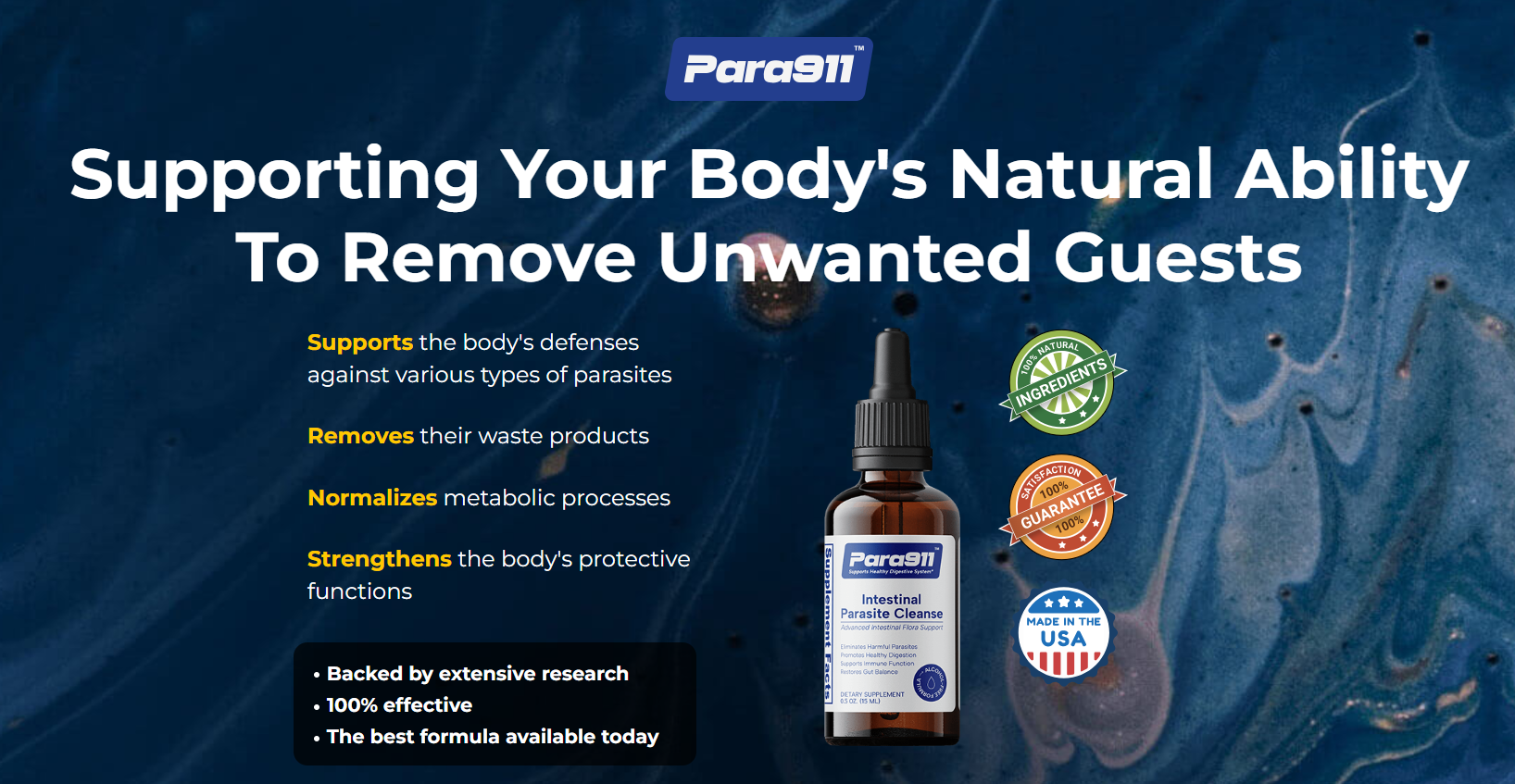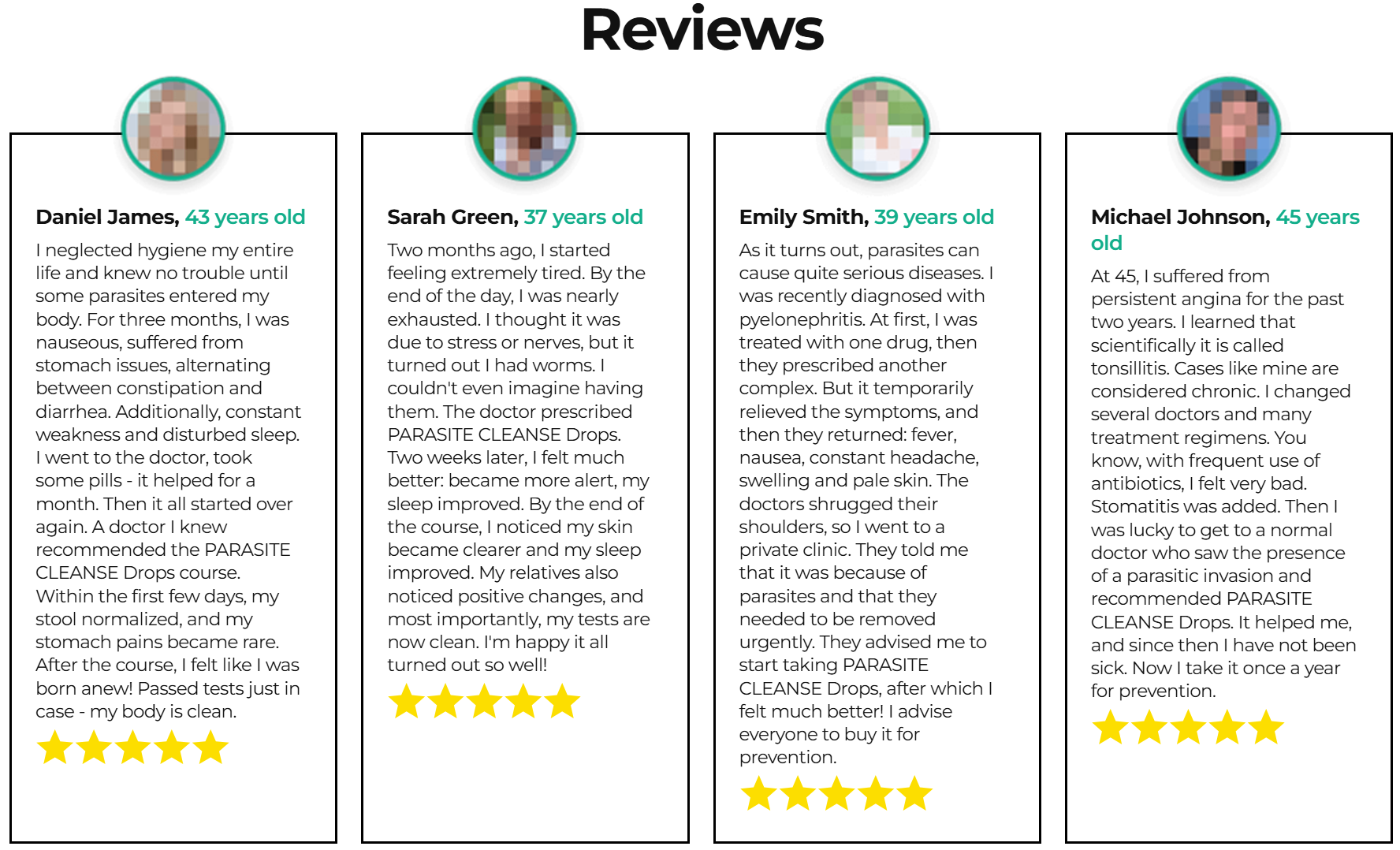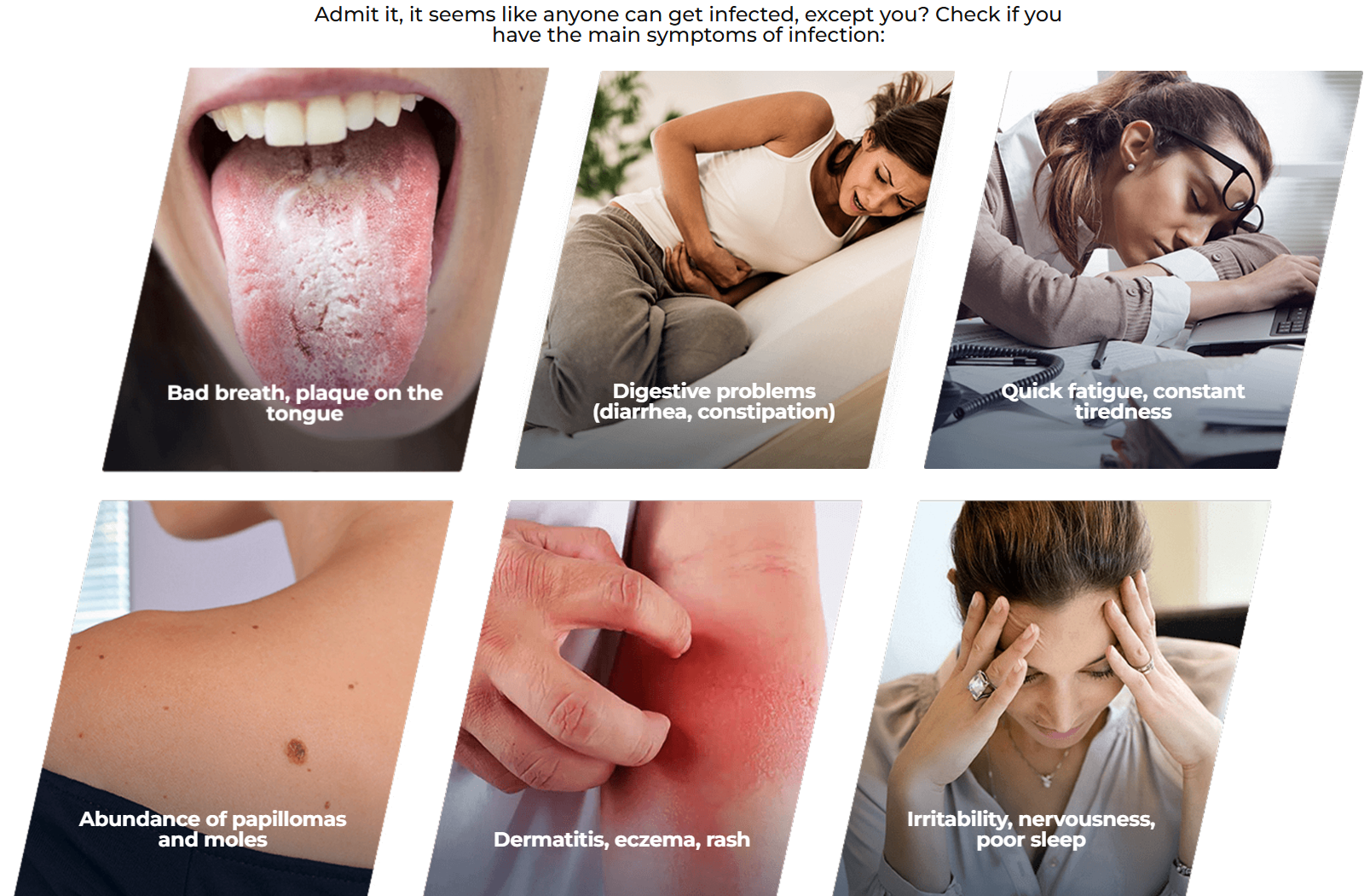
Do you experience teeth grinding, anal itching, fatigue, anxiety, excessive hunger, and sometimes unclear thinking? In addition, every time you visit the doctor, they give you a bunch of multivitamins that don’t seem to work at all. What is the root cause of these problems?? It is the parasites. Our body is an optimal breeding ground for multiple parasites, which suck on nutrients meant for our body. Multivitamins are a temporary solution. You need a parasite cleanser like Para911 Parasite Cleanse Drops.
Before you jump to any conclusion and dismiss the Parasite Cleanse products, read this Para911 Parasite Cleanse Drops Canada review, which provides all the necessary information about the product. The general reception of the product is favorable. However, it is not an FDA-approved product. In fact, none of the supplements is FDA approved. The science behind such products is complex. Yet, they are gaining popularity. So, what is this cleanse product…
What are Para911 Parasite Cleanse Drops?
Para911 Parasite Cleanse Drops are a dietary supplement designed to eliminate parasites in your body, boost immunity, and improve life quality. Ingredients in this supplement are herbal in nature, meaning all are extracted from plants. This reduces the risk of side effects. As per the manufacturers, it can reduce stress and anxiety in a few cases. Overall reception of the product is mixed. Few people are very happy with the results, while others find it completely useless.
Product Information
- Product Name: Para911 Parasite Cleanse Drops
- Flavor: Unflavored
- Quantity: 15 ml (.5 OZ)
- Manufacturer: Para911
- Price:
- Money-Back Guarantee: 30 Days
- Dosage: .5 ml per day (May increase, depending upon the need of the person)
Who should use Para911 Parasite Cleanse Drops Canada?
Below are the common symptoms of a parasitic infection. If you are experiencing any three of them, then you are an ideal person for this product:
- Digestive Problems
- Persistent Anal Itching
- Excessive hunger and sugar cravings
- Sudden weight loss, low energy
- Mental fog, poor sleep,
- Anemia, nausea, anxiety
What are the benefits of Para911 Parasite Cleanse Drops?
- Reduced Bloating, Gas, Irregular Bowel Movements: Improves the digestion process, which reduces bloating and maintains a healthy bowel movement.
- Stronger Immune System: Certain Ingredients here prove to be beneficial in improving immunity. They improve the white cell production.
- Improved skin health: By killing the parasites, it improves skin health, making it more supple and soft.
- Boosted Energy Levels: A surge in energy levels is expected when you take the cleanse products. Making you alert and active all day long. It reduces fatigue.
- Mental Clarity: Another benefit of increased energy levels. Our brain consumes 20% of our energy. Para911 Parasite Cleanse Drops allow us to burn more fat and get energy.
- Mild Body Detox: Few people claim to have experienced reduced toxins in their bodies.
What makes Para911 Parasite Cleanse Drops a unique product?
- Effectiveness: Our research indicates that this product is 63% more effective than its closest competitors.
- Quality: Manufactured in an FDA-approved GMP-certified lab
- Ingredients: All ingredients are plant-based
- Ease to swallow: Unflavored with neutral taste.
- Value for money: 82% users are satisfied with the product.
Key Ingredients and Scientific Evidence that Backs Para911 Parasite Cleanse Drops Canada
- Wormwood: A potent vermifuge, it can expel worms. Also has compounds beneficial for digestive health. Studies have shown positive results with wormwood in certain parasites. More research is required to establish a positive correlation.
- Black Walnut Hull: Contains the compound juglone, which is believed to be effective against a wide array of parasitic worms. Juglone is antimicrobial and anti-fungal in nature. It can kill bacteria and small worms.
- Cloves: Cloves contain eugenol. Eugenol can kill parasites and their eggs. Eugenol is antimicrobial and insecticidal in nature. It can kill adult parasites and prevent eggs from hatching.
- Garlic: Garlic contains the sulfur compound, allicin. Allicin is antimicrobial and an immune booster. It improves digestion and boosts immunity.
- Oregano Oil: It contains thymol and carvacrol. A 2020 study in mice shows oregano oil improving the body’s defense system. A more robust study is required to study the benefits for humans.
- Berberine: Berberine has an anti-parasitic effect. It is an alkaloid that can manage parasitic infection caused by certain protozoa, like Giardia and Blastocystis.
- Organic turmeric
- Organic Cleavers
- Wildcrafted Neem Leaf
Pre-Launch Clinical Trial Results of Para911 Parasite Cleanse Drops
Before launching the product in the market, the manufacturers did a trial. 200 people participated in the trial. Two groups of 100 people were created. One group received the placebo, and the other group received the Para911 Parasite Cleanse Drops Canada. The results were as follows:
- 97% volunteers in the group taking Para911 Parasite Cleanse Drops experienced improved bowel movements and sleep cycle.
- 70% volunteers in the group who experienced the positive skin health
- 82% people in the group taking the Para911 Parasite Cleanse Drops saw a surge in energy levels and reduced fatigue
Customer Reviews of Para911 Parasite Cleanse Drops
Renee, 48, Alabama, “For almost two years, I was living in hell with no medical diagnosis. Para911 Parasite Cleanse Canada changed my life. It helped me get better.”
Lucas, 56, California, “I had no idea I was living with parasites. My friend suggested this. It helped with bloating and gas. Definitely recommended”
Clive, 65, Florida, “before using Para911 Parasite Cleanse Drop, I had barely any energy to make it through the day. I’m not sick every month and feel much better.”

Pros and cons of using Para911 Parasite Cleanse Drops
Pros:
- 100% plant-based ingredients
- NON-GMO
- Lab tested
- Made in USA
- Gluten Free
Cons
- Internet Exclusive product
- May not work for everyone
- Lack of third-party testing
Side Effects of Para911 Parasite Cleanse Drops Canada
- Stomach-ache: New users may experience stomach-ache and nausea. It may get worse with prolonged use.
- Headache and fatigue
- Disruption of the healthy gut biome
- Liver or Kidney problems
- Interaction with prescription Medication
Who should avoid using Para911 Parasite Cleanse Drop?
- People under the age of 18
- People taking prescription medication
- Pregnant or breastfeeding women
Do parasite cleanse products like Para911 Parasite Cleanse Drop actually work?
The truth is, none of the body cleanse products are medically approved. The research available does not show any benefit of parasite cleanse products. These products are herbal in nature and marketed as supplements. And supplements are not regulated by the FDA. So, these products lie in the gray zone.
If you feel you have a parasitic infection, you must consult a doctor. To confirm the presence of a parasite, stool and urine samples are collected. Then, as per the results, medication is prescribed. We always recommend consulting a doctor before you start taking any supplement.
Conclusion
Living with a parasite can be exhausting. It sucks all the nutrients meant for your body. And most of the time, it remains undiagnosed. Para911 Parasite Cleanse Drop is a product that you can get without a prescription and boost digestive health and immunity. It is affordable and can be bought from its official website.
Frequently Asked Questions
How long will Para911 Parasite Cleanse Drop take to show results?
Most people will start seeing results after 2 or 3 weeks. For complete results, take the product for at least 90 days.
Is Para911 Parasite Cleanse Drop medically approved?
No, this product is not a medically approved product. It is a general care supplement.
Is Para911 Parasite Cleanse Drop FDA-approved?
No Para911 Parasite Cleanse Drop is not FDA approved. In fact, none of the supplements is FDA approved. The FDA does not regulate supplements.
Can parasite cleanse worsen my condition?
There is a slight possibility of this happening. Stop taking the product immediately and consult a doctor.
Disclaimer & Copyright
The content on AmericanPainSociety.org is provided for general informational purposes only and should not replace professional medical advice, diagnosis, or treatment. We make no guarantees of accuracy, completeness, or timeliness. Users rely on the information at their own risk. Always consult qualified professionals for healthcare decisions.
© 2025 American Pain Society. All rights reserved. No part of this website may be reproduced, distributed, or transmitted in any form or by any means without prior written permission.

